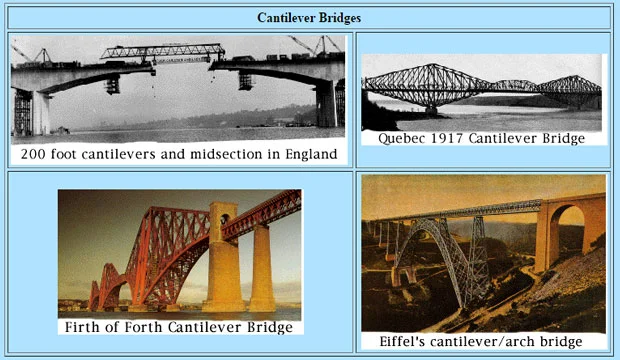Here is a brief description of four kinds of bridges and its geometry:

The beam or truss bridge is, to all intents and purposes, a pair of beams backing a deck covering the gap between two pillars. A beam has to endure both compression and tension, the first one (compression) is in its upper parts and the last one (tension) in its lower parts. During the time of passing over supports, other forces get involved. A beam could be a void box support or an open frame or truss.

An arch bridge is designed in a special way so that none of its part withstands tension. Concrete is appropriate to develop an arch bridge design. In case of the usage of reinforced concrete, a more exquisite and less expensive arch can be designed and nearly all concrete arch bridges are reinforced.

A suspension bridge contains, on the whole, of a deck hung from cables enticed between high towers. The cables of high tensile steel wire are capable to weigh massive loads. The towers are in both direction, compression and the deck, every now and then containing of a long narrow truss (used as a hollow beam), is supported at recurrent gaps along its length.

Normally a cantilever bridge is supported by two beams, each supported at one end. Unlike a simple beam supported at both ends, the cantilever must withstand tension in its upper half and compression in its lower portion.

